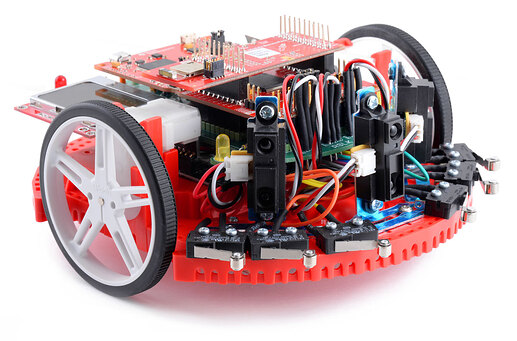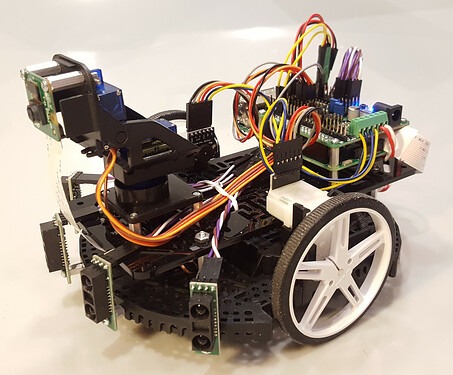Hi, ghawkins.
Thanks for reading our blog! Great question!
The Romi platform definitely has some advantages over using one of our acrylic expansion plates for a robot.
For starters, the Romi chassis is less expensive. The base chassis has a built-in 6xAA battery compartment and includes the motors, wheels, one ball caster, and battery contacts. Purchasing the components necessary to make something similar with the expansion plate actually ends up costing more. Even once you factor in the cost of the control boards recommended in those blog posts, you would still spend less making a Romi based robot.
Besides cost, there are other advantages to the Romi, too.
The chassis is made out of injection molded plastic parts that are much stronger than the expansion plate, which is made out of laser cut acrylic. The plates do work fine for most robots, but you might want to be careful about any situation where the robot could be running into things or could be handled roughly. I’ve played around with the Romi chassis quite a bit and I’ve never worried about it bumping into things or worried that dropping it might break it, and I’ve definitely kept those things in mind when working with the expansion plates.
You mentioned the expansion plate robot looking less cluttered with more room to build on, but the Romi is very easy to expand upon. Besides all the mounting holes you can see in the chassis, note that the control board PCB still gives you access to all the mounting holes underneath it. We also sell an expansion plate for the Romi that you can use to stack your Romi with multiple layers of electronics. Here are a couple example photos of some ways to expand upon a Romi:
And amusingly, here’s a photo of a Romi that was posted to our forum by DrGFreeman that shows a Romi expaded with one of our acrylic expansion plates:
Finally, we also have some neat accessories designed specifically for use with the Romi chassis like the Romi Encoder Pair Kit and the Robot Arm Kit for Romi:
All that said, making the expansion plate robot might still be the better choice for you based on your comment about flexibility for some components. It’s definitely fun to design a robot from nothing but a rectangular plate and work out things like what motors and wheels to use, where to put them, if you should use a ball caster or idler wheels, how to mount your batteries, and things like that. (If you really want to get fancy, you could even design your own acrylic plate for your chassis base and have it laser cut by us.)
I hope this helps you make a decision. We’d love to see what you end up making!
-Emily




